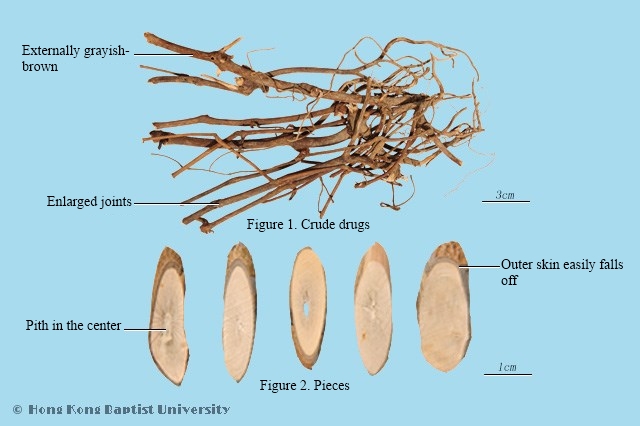Production RegionsPrimarily produced in the Chinese provinces of Sichuan, Fujian, Guangdong, Guangxi.
Macroscopic FeaturesWhole length is 10~30cm, rhizome is 5~10cm long. Rhizome is cylindrical, often curved, some have branches, diameter 2~6mm; upper portion often has short aerial stem, and is branched. Externally grayish-brown, enlarged joints, joints have thin long and slightly curved roots, exterior has thin wrinkles. Stem and rhizome have brittle texture; easily broken, fractured surface is uneven, slightly fibrous, with pith in the center, relatively large, outer skin easily falls off. Root has relatively soft and pliable texture. Weak odor, tasteless.
Quality RequirementsSuperior medicinal material has long strip, even thickness.
FunctionsClears heat, resolves toxin, cools blood, eliminates swelling. Apply to epidemic heat syndrome with eruptions, high fever with head pain, epidemic disease characterized by swelling and redness of face, erysipelas, mumps, virus hepatitis, flu; pneumonia, swelling sore, herpes.
OriginThe dried root and rhizome of Baphicacanthus cusia (Nees) Bremek.(Acanthaceae)
